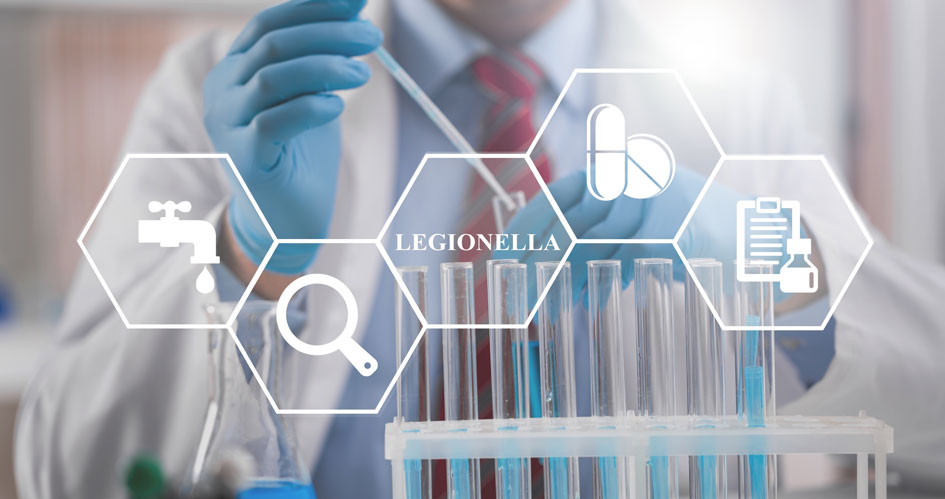
A bacterium called Legionella that causes an acute respiratory infection and be found in freshwater environments or in other complex water systems such as:
Environments with temperatures of 20-45°C are ideal conditions for Legionella to grow and multiply. Of the many different strains of the bacterium, legionella pneumophila is the strain associated with the human illness, presenting in two clinical forms called Legionnaires’ Disease and Pontiac Fever.1,2
Legionnaire’s disease can present
Depending on the environment in which it presents, it can be distinguished as:
Not everyone who is exposed to Legionella will get ill. People at risk for getting sick from Legionella include:
Incubation period of this illness is ~2-10 days. Legionella Pneumonia is a serious pneumonia that requires hospitalization with a mortality rate of 1-10%. However, early treatment with antibiotics has significantly improved the prognosis and outcome of the disease.
SYMPTOMS: fever, cough, shortness of breath, headache and nausea, diarrhea, confusion. Symptoms begin 2-10 days after exposure.
DIAGNOSIS: Chest X-ray, urine test, bacterial culture in sputum (prior to antibiotic treatment)
TREATMENT: antibiotics with macrolides or fluoroquinolones while also treating the symptoms
Less severe, it usually resolves in 3-5 days. Symptoms may begin within a few hours of exposure, with flu-like symptoms such as fever and muscle aches. No specific medical treatment is needed except for symptoms treated with antipyretic analgesics.
Prevention is based on regular management and treatment of complex water systems to keep Legionella from growing. The following is important for controlling outbreaks:
In Greece there is a diligent system for monitoring and controlling the quality of water resources and water supply facilities through multiple parameters including the search for toxic substances and pathogenic microorganisms. Audits of water systems are made systematically throughout the country and especially in tourist areas. The recent cases of Legionnaire’s disease in Greece are the first ever reported and are considered sporadic and not attributed to a specific source. The European Centre for Disease Prevention and Control is also regularly updated.3
Recording, monitoring and reporting Legionnaire’s Disease is obligatory in Greece and is completed by a special form of the Ministry of Health and the Hellenic Center for Disease Control and Prevention (HCDCP) for the effective epidemiological surveillance of the disease.
ANNA S. TZORTZI MD, FCCP
PNEUMONOLOGIST
References
